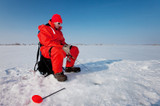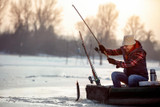Traditional Fishing Techniques Around the World
Fishing has been an integral part of human civilization for millennia, with different communities developing unique traditional fishing techniques that reflect their ingenuity, resourcefulness, and respect for the aquatic ecosystems they depend upon.
These time-honored practices, passed down through generations, highlight the connection between humankind and the natural world, demonstrating the resilience and adaptability of our ancestors.
Learning these techniques provides insight into ancient traditions and offers a practical understanding of sustainable fishing practices. At FISH307, we understand the importance of preserving these traditions while equipping anglers with the latest fishing equipment and gear to take their angling experience to the next level.
African Traditional Fishing Techniques
Africa's varied landscapes have fostered the development of diverse traditional fishing techniques; each adapted to the region’s unique waterways and fish species.
Net Fishing in Nile Delta, Egypt
In the fertile cradle of civilization, the Nile Delta, Egyptian fishermen have perfected the art of net fishing for centuries. Their methods, though simple, rely on an understanding of the underwater world.
Cast net fishing requires a practiced flick of the wrist. The net unfurls into a wide circle, ideally encasing schools of fish in the shallows. Experienced anglers, attuned to fish behavior and seasonal patterns, can predict where these schools will gather and time their throws for a perfect catch.
Seine netting is a team effort. Long nets with weighted ends are deployed from boats, and with strategic maneuvering, the fishermen create a barrier, corralling fish into the central pouch of the net. Coordination is critical to ensuring a successful haul.
Trap Fishing in Central Africa
Moving further south to the vast freshwater lakes and rivers of Central Africa, local communities use various trap fishing methods. Fish traps, constructed from woven reeds, papyrus stalks, or tree branches, are strategically placed in areas with high fish traffic.
These ingenious traps are built for sustainability. They often feature an escape mechanism that allows smaller fish to slip through unharmed, ensuring the long-term health of the ecosystem.
This practice exemplifies the respect for the natural balance inherent in many traditional fishing methods.
Fly Fishing in Morocco
In Morocco's rugged Atlas Mountains, a centuries-old fly-fishing tradition has endured, showcasing the region’s rich cultural heritage and its connection to the mountain streams and rivers that wind through the landscape.
Moroccan fly fishermen have perfected the art of crafting flies from materials like feathers, fur, and silk. These flies, painstakingly tied to mimic the appearance and movements of insects that the region’s trout and barbells feed upon, are cast into the crystal-clear waters.
The technique requires patience, stealth, and an innate understanding of the fish’s behavior and habitat. Fly fishermen often spend hours wading through the streams, carefully reading the currents and identifying the prime spots where fish are likely to strike.
European Fishing Traditions
With its varied topography and maritime heritage, Europe is home to fishing traditions that reflect the continent’s storied past and cultural diversity.
Ice Fishing in Scandinavia
In the subarctic regions of Norway and Sweden, they practice ice fishing. During the harsh winter months, when lakes and rivers transform into a frozen landscape, fishermen take to the ice armed with specialized fishing rods.
These short rods, often featuring insulated handles and brightly colored jigs called “pimples” in Swedish, are used to entice fish lurking beneath the thick ice. Success depends on knowing how fish behave in cold water and using the right bait and lures to tempt them through the ice hole.
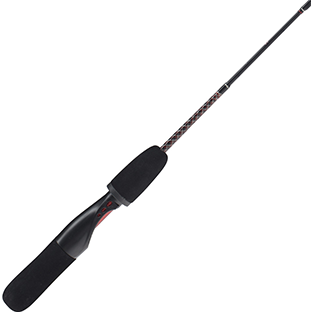
FISH307 offers a variety of high-quality ice fishing rods and reels specifically designed to meet the demands of cold-weather fishing. These reels feature smooth drags and low-profile designs to perform flawlessly in frigid temperatures, ensuring you can land that trophy catch even when the mercury dips.
Trabucco Fishing in Italy
Along the picturesque coastlines of Italy, a unique and ancient fishing technique known as “trabucco” has been practiced for centuries. These massive wooden structures, often spanning several meters in height and length, are positioned along the shoreline, allowing anglers to cast their nets far into the open waters.
These structures weigh tons and are a marvel of engineering. A carefully balanced system of pulleys, levers, and counterweights allows fishermen to cast and retrieve their nets effortlessly.
Built with local materials like wood, stone, and rope, the trabucco represents a tradition passed down through generations, a reminder of the connection between these communities and the sea.
Haaf-Netting in the UK
The unique tradition of haaf-netting is practiced in parts of the United Kingdom, particularly in Scotland and Wales. Haaf nets are large, circular nets with long handles traditionally used by small boats or on beaches.
The fisherman dips the net into the water in a sweeping motion and then lifts it vertically, capturing fish trapped within the net’s circumference. The size and mesh of the haaf net determine the target species, with smaller nets used to catch shellfish and larger nets to catch salmon and sea trout.
While no longer as widespread as before, haaf-netting remains a cultural symbol in certain coastal communities, particularly in Wales, where it has been designated a national heritage skill.
Asian Traditional Fishing Techniques
With its expansive coastline and rich maritime traditions, Asia is a melting pot of traditional fishing techniques shaped by centuries of cultural exchange and innovation.
Cormorant Fishing in Japan
In the ancient town of Gifu, nestled along the banks of the Nagara River, the captivating tradition of cormorant fishing has endured for over 1,300 years. This UNESCO-recognized practice, known as ukai, involves using trained cormorant birds to catch fish in a sustainable and environmentally friendly way.
Native cormorant masters, known as usho, have perfected the art of training these birds to dive into the river and catch fish using their sharp beaks and talons. A special metal ring is placed around the cormorant’s neck, allowing it to swallow small fish but preventing it from consuming larger catches.
As twilight descends, the usho and their cormorants take to the water, gliding along in traditional wooden boats. The cormorants dive into the river, expertly navigating the currents and depths, while the usho carefully monitor and control their movements using strings attached to the neck ring and retrieve their catch.
Bamboo Raft Fishing in China
Fishermen have long used bamboo raft fishing on the vast network of rivers and canals that snake through China. These simple rafts, constructed from lightweight bamboo poles lashed together, provide a stable platform for anglers to cast their lines.
The use of readily available materials and bamboo’s low environmental impact make this technique a model of sustainability. Fishermen on these rafts typically use long bamboo poles with simple lines and lures, targeting a variety of freshwater fish species like grass carp, Wuchang bream, and perch.
Kite Fishing in Indonesia
In the scenic coastal regions of Indonesia, a unique tradition of kite fishing has flourished for generations. This ingenious technique involves using large kites made from locally sourced materials like bamboo and cotton to cast fishing lines far out into the open waters.
Local kite anglers have perfected the art of maneuvering these massive kites, which can span several meters in length. They skillfully harness the coastal winds to lift their kites high into the air, carefully controlling the angle and tension of the lines to achieve the desired cast.
Once the kite is aloft, a long fishing line is attached to its tail, allowing the bait or lure to be carried far beyond the reach of conventional casting techniques. The anglers then patiently await the telltale tug on the line, signaling a potential catch.
Oceania Traditional Fishing Techniques
The Pacific Ocean and its many islands are home to a long history of traditional fishing techniques, deeply woven into the culture and way of life of Oceania.
Spearfishing in Australia
Australia’s sun-drenched shores hold an ancient tradition—spearfishing. The practice is woven into the cultural heritage of Aboriginal and Torres Strait Islander peoples and is a legacy passed down to future generations.
Aboriginal fishermen spend years honing their skills, making them exceptional swimmers, divers, and hunters. Their techniques include free-diving for breath-holding endurance, camouflage to blend in with the reef, and stealthy movements to get close to their target.
The tools are traditionally crafted from wood, kangaroo bone, or even metal, and each spear is precisely carved and balanced for weight and accuracy. In the hands of an aboriginal fisherman, these spears become an extension of their skill, striking true with a single, precise shot.
Net Casting in Polynesia
Across the other side of the Pacific Ocean, Polynesian cultures have developed various net casting techniques specifically adapted to their island environments. One method involves a large, circular net weighted at the edges.
Several skilled net casters work together, wading into the water and slowly spreading the net in a circle. Once the circle is complete, they begin to close the net, corralling fish inside.
This technique requires cooperation and knowledge of tides and currents to ensure a successful catch. While large-scale net casting is less common today, some Polynesian communities still use smaller versions of these nets for subsistence fishing.
Line Fishing in New Zealand
In the waters that surround the rugged coastlines of New Zealand, the ancient tradition of line fishing has endured for centuries. This ancient practice, which has its roots in the cultural heritage of the Māori people, uses hand-lines and specialized lures or baits to catch a variety of local fish species like snapper and kahawai.
Māori line fishers have cultivated a knowledge of marine ecosystems through generations of experience. They master the art of angling and navigation and use indigenous wisdom regarding fish habits and seasonal movements.
The hand lines are woven from sturdy materials like flax or animal fibers, with each line carefully constructed to ensure strength, durability, and the ability to withstand the powerful currents and surging waves that characterize New Zealand’s coastal waters.
American Traditional Fishing Techniques
From the icy waters of Alaska to the steamy jungles of the Amazon, traditional fishing techniques have played an essential role in shaping the cultural landscape of the Americas.
Trolling in Native Alaska
In the waters on Alaska’s rugged coastlines, the region’s native communities have practiced trolling for centuries. This ancient technique uses specialized lines and lures strategically trolled behind boats or canoes to entice a variety of fish species, including salmon, halibut, and cod.
Native Alaskan fishermen have developed an intimate understanding of the marine ecosystems, honing their skills to become expert navigators and anglers. They use a range of traditional techniques, from carefully reading the currents to using local knowledge of fish behavior and migration patterns.
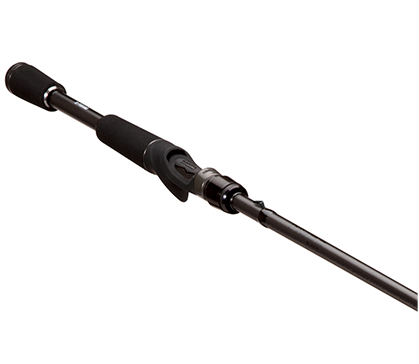
While modern trolling techniques have incorporated downriggers and flasher lures, the core principle of using moving bait to attract fish remains the same. At FISH307, we offer a variety of downriggers, fishing rods, baitcasting reels, and terminal tackle specifically designed for trolling for salmon and other pelagic fish species.
Seine Fishing in the United States
Along the Atlantic and Gulf coasts of the United States, seine fishing has been a staple for centuries. Similar to the technique used in Egypt, seine fishing in the US involves casting large nets from boats to encircle schools of fish. These nets, with weighted ends and floats at the top, create a barrier, trapping fish in the central pouch of the net.
While large-scale commercial seine fishing dominates today, smaller, localized seine fishing operations remain vital to coastal communities, providing fresh seafood and preserving a historical tradition.
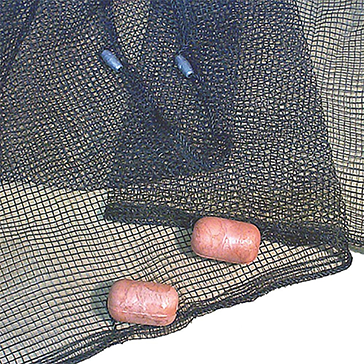
For recreational anglers interested in trying this technique, we offer seine nets designed for individual use from a boat or dock. These throw nets can be a fun and effective way to catch baitfish or smaller species.
Trap Fishing in Amazon
Deep within the lush rainforests of the Amazon basin, indigenous communities have developed ingenious trap fishing methods that harness the region’s abundant waterways while minimizing environmental impact. These traps, made from local materials like bamboo and vines, are designed to catch fish without hooks or bait.
One technique is strategically placing basket traps in streams or rivers to capture fish as they swim upstream. The traps are carefully woven with narrow openings that allow fish to enter but prevent their escape, ensuring a bountiful catch without harming the aquatic ecosystem.
Another innovative method is the use of dam-like structures constructed across shallow streams. These dams, built from stones, branches, and mud, create a temporary barrier that redirects water flow, guiding fish into prepared traps or baskets.
Learning from Traditional Fishing Techniques
Exploring traditional fishing techniques from around the world can remind us of the wisdom and ingenuity that different communities have cultivated over centuries of interaction with their local environments.
At FISH307, we are dedicated to celebrating and promoting these ancient practices. We provide high-quality fishing equipment and accessories that honor these local traditions while exploring modern innovations.
Contact us today at FISH307 to connect with our team and discover high-quality fishing gear for a range of modern and traditional fishing techniques.
Recent Posts
-
Ice Fishing Safety 101: What Every Angler Needs To Know
Ice fishing offers a unique thrill, but safety should always come first. Knowing the basics of ic
-
Ice Fishing Season Prep: Your Essential Pre-Ice Checklist
When the lakes start freezing, it’s time to swap your boat for an ice auger. But before you hit the




